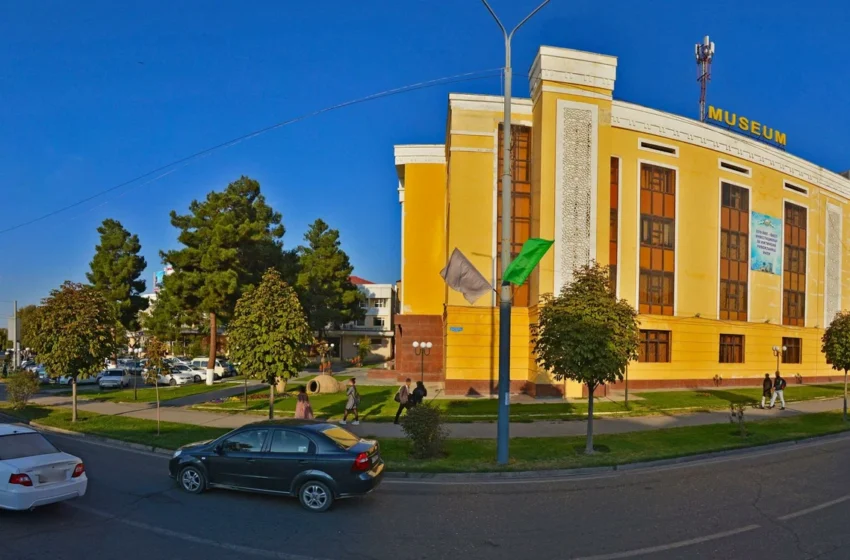The State Museum of History and Culture of Uzbekistan in Samarkand: Preserving Over 3,000 Years of Heritage and Housing 50,000 Artifacts

The State Museum of History and Culture of Uzbekistan in Samarkand
The State Museum of History and Culture of Uzbekistan in Samarkand (Uzbek: Samarqanddagi O’zbekiston tarixi va madaniyati davlat muzeyi) is one of the most prominent museums in Samarkand, Uzbekistan. It is dedicated to the rich history and vibrant culture of Uzbekistan, with a particular focus on Samarkand and its surrounding historical regions. This museum is part of the Samarkand Museum Reserve and plays a pivotal role in preserving and showcasing the heritage of Central Asia.
The State Museum of History and Culture of Uzbekistan in Samarkand: Historical Background
The origins of the museum date back to 1874, when an amateur museum was established in Samarkand. However, it was dissolved during the tenure of Turkestan Governor-General Mikhail Chernyaev (1882–1884).
The modern museum began its journey on July 21, 1896, when the Samarkand Regional Statistical Committee inaugurated it as the “Museum of the Samarkand Statistical Committee.” Initially housed in a small room next to the Georgievskaya Church, the museum’s foundation was laid by archaeologists Leon Barshevsky and Vasily Lavrentyevich Vyatkin, with Vyatkin serving as its first director. His efforts also led to the construction of a dedicated museum building.
In 1911, the institution was renamed the Samarkand City Museum, and it underwent several name changes over the decades:
- 1930: Samarkand Regional Museum
- 1930–1937: State Central Museum of Uzbekistan
- 1937–1945: Samarkand Regional Historical and Local Lore Museum
- 1945–1955: Republican Museum of Uzbek National Culture
- 1955–1969: Republican Museum of the History of Culture and Art of Uzbekistan
In 1969, it became the State Museum of the History of Culture and Art of the Uzbek SSR named after A. Ikramov, one of the largest museums in the republic. By 1982, the museum evolved into the Samarkand State Unified Historical-Architectural and Art Museum Reserve, consolidating its importance as a cultural institution.
Museum Building
From 1978 to 2010, the museum was located in a purpose-built structure near the Registan Square, along Tashkent Street. However, this building was later demolished, and the site was converted into the Tigers’ Alley Park (Yulbarslar Hiyoboni). In 2010, the museum was relocated to its current premises on Mirzo Ulugbek Street. After extensive renovations, the updated building was officially reopened on September 1, 2014, in a grand ceremony that marked a new chapter for the museum.
Collections and Exhibits
The museum houses an extensive collection of artifacts and exhibits, divided into various thematic sections, including history, archaeology, ethnography, fine arts, numismatics, and more. Its collection is a treasure trove of cultural and historical items that offer insights into Uzbekistan’s rich past.
Archaeological and Historical Artifacts
The museum boasts a remarkable collection of ancient and medieval items:
- Pottery and Ceramics: Rare and beautifully preserved artifacts from various historical periods.
- Metal and Glass: Exquisite examples of craftsmanship, including tools, utensils, and decorative items.
- Weapons and Tools: Blades, arrowheads, and other instruments from the Bronze Age and beyond.
- Ossuaries and Ritual Items: Representing the Zoroastrian traditions of the region.
- Unique Artifacts: A bronze helmet from the 6th century BCE and a globe made by Khujand educator Hoja Yusuf Mirfayazov.
Numismatics
The museum’s numismatic collection is one of its highlights, featuring over 30,000 coins from ancient Central Asia, Ancient Greece, Rome, and regions of the Black Sea. The collection also includes artifacts of glyptics, toreutics, and other items containing precious metals.
Ethnography and Art
The ethnographic section comprises approximately 20,000 items, including:
- National clothing and textiles, such as embroidered suzanis and carpets.
- Gold embroidery, showcasing the intricate craft traditions of the region.
- A jewelry collection of 1,500 items, including a full bridal set from the 19th–20th centuries.
- Paintings and sculptures by renowned Central Asian and European artists, such as Vereshchagin, Nikolay Karazin, and Usto Mumin.
Manuscripts and Archives
The museum preserves around 3,000 manuscripts, many of which are decorated with miniatures and written in Arabic, Persian, and Uzbek. The collection includes legal documents, literary works, and other texts that span centuries. The photographic and documentary archive comprises 60,000 items, including rare photographs, newspapers, and posters from the late 19th to the 20th century.
Cultural Significance and Publications
In 2017, the museum collaborated with the World Society for the Study, Preservation, and Popularization of Uzbekistan’s Cultural Heritage to publish a book-album in the series “Uzbekistan’s Cultural Heritage in World Collections.” This project showcased the museum’s unique artifacts, such as ancient carpets, and was accompanied by a documentary film highlighting its collection.
Visitor Experience
Today, the State Museum of History and Culture of Uzbekistan serves as a vital hub for cultural education and tourism. Visitors can explore its diverse exhibits, attend cultural events, and gain a deeper understanding of Uzbekistan’s rich heritage. The museum’s blend of historical depth and cultural vibrancy makes it a must-visit destination for anyone interested in the history of Central Asia.




